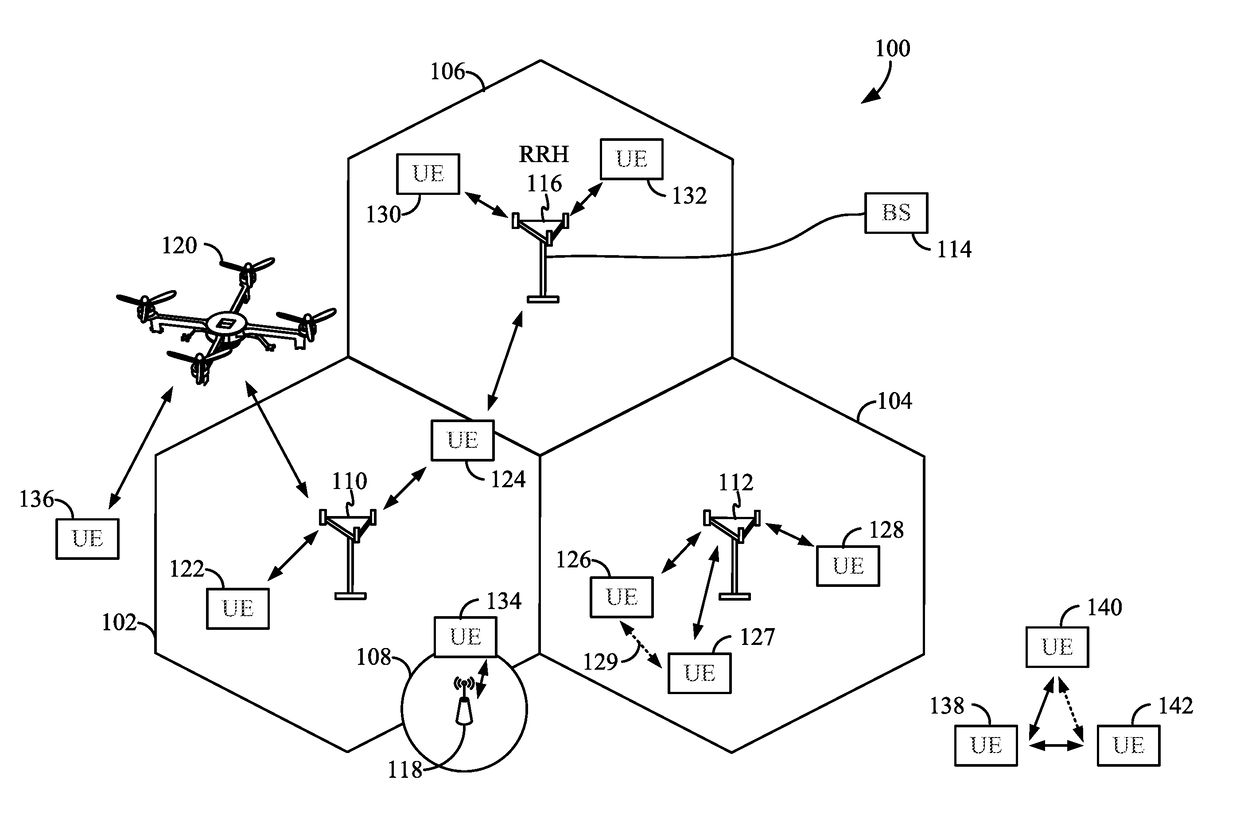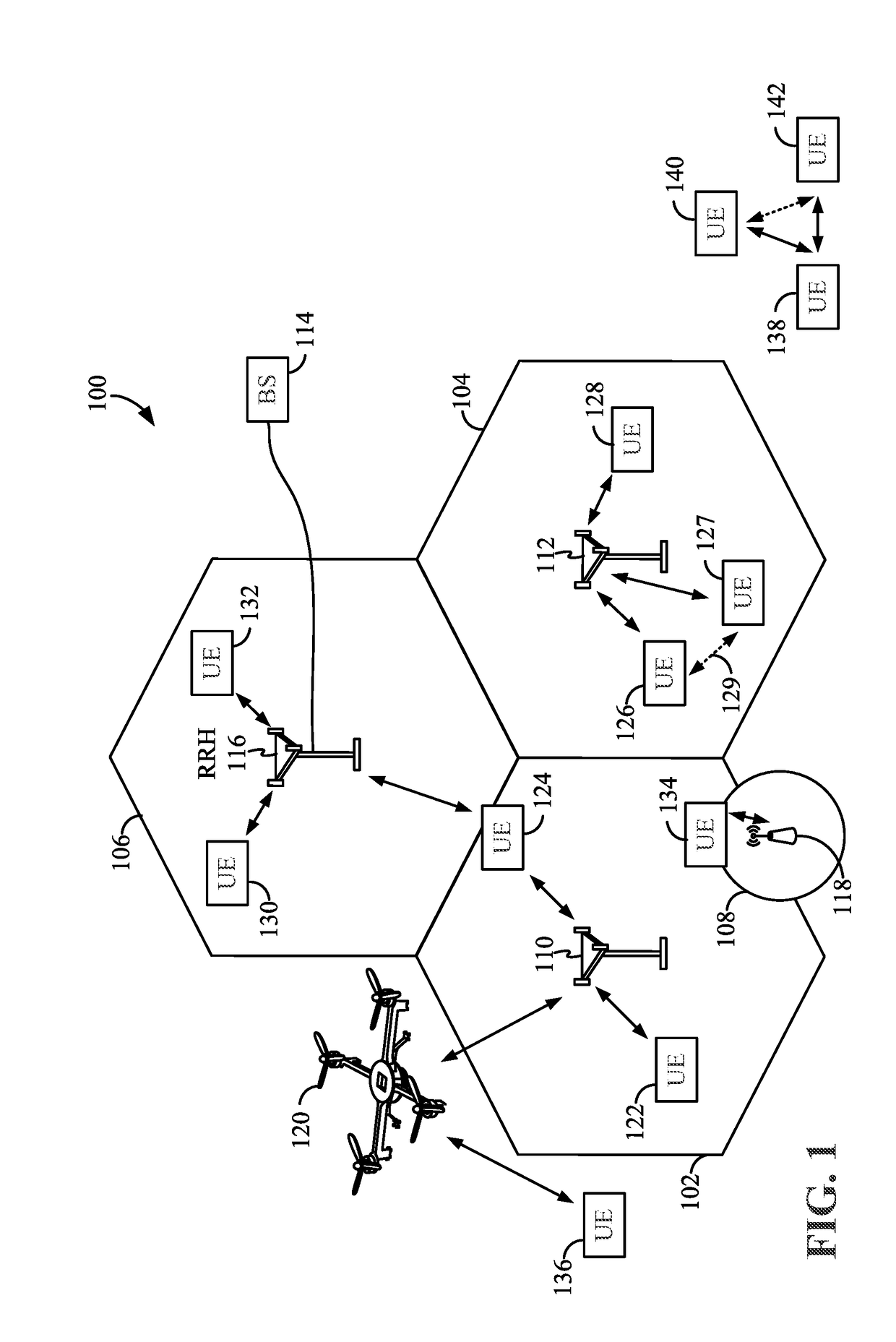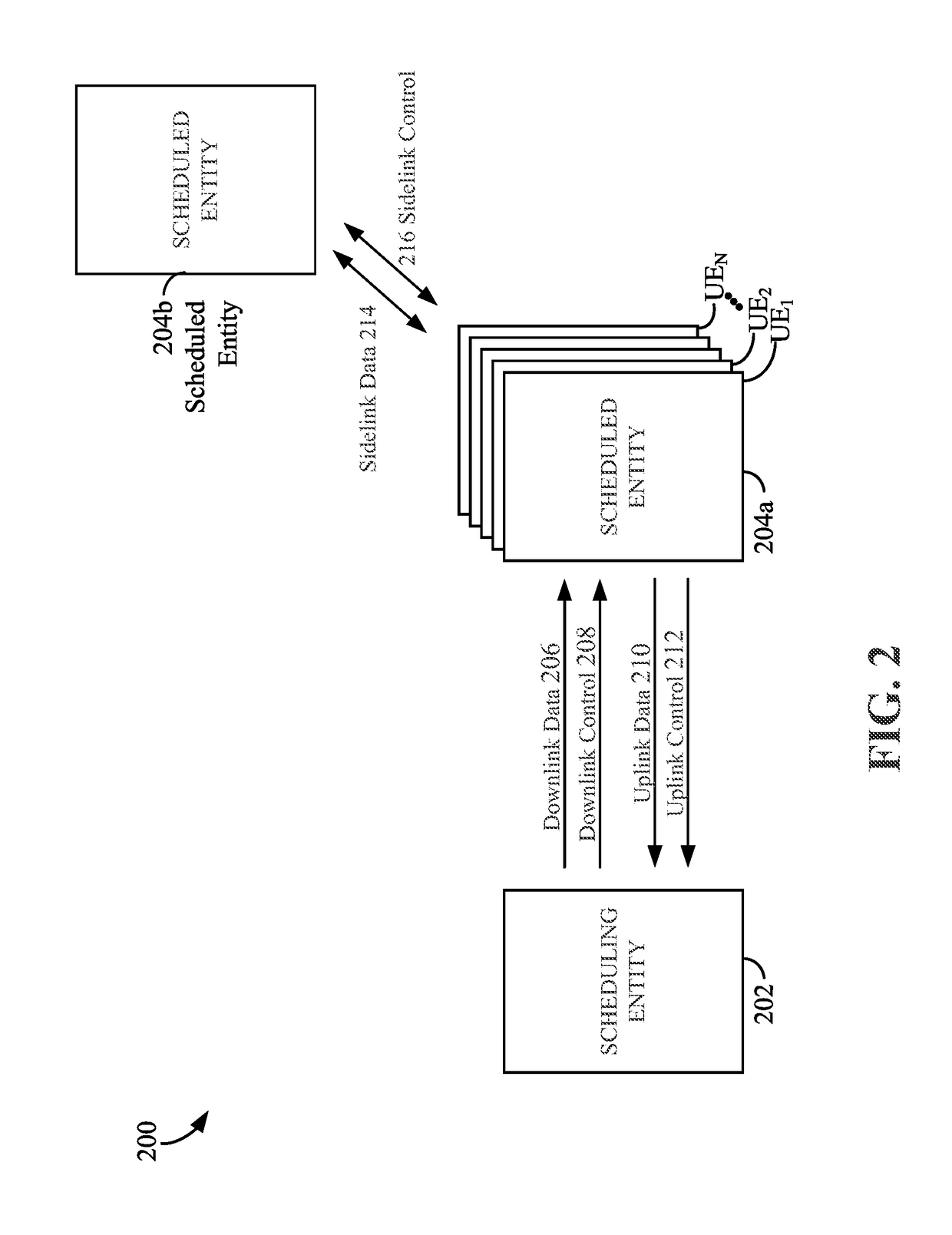Clear-to-send (CTS) power control in sidelink
a power control and sidelink technology, applied in connection management, climate sustainability, high-level techniques, etc., can solve problems such as ue-to-ue communications that may potentially interfere with enb-to-ue communications and/or other ue-to-ue communications
- Summary
- Abstract
- Description
- Claims
- Application Information
AI Technical Summary
Benefits of technology
Problems solved by technology
Method used
Image
Examples
example b
[0101] For a fixed link distance (e.g., distance between sidelink transmitter UE11006 and sidelink receiver UE21008 linked in device-to-device communication), a fixed received RTS channel power, and a fixed value for the constant parameter C, the UE2 CTS channel interference protection zone 1022 surrounding sidelink receiver UE21008 has an exemplary first diameter. The exemplary first diameter may be satisfactory for transfer of data (e.g., from sidelink transmitter UE11006 to sidelink receiver UE21008) related, for example, to a text message or voice over IP (VoIP) communication. However, a scenario may exist in which, for example, there is not much data to transmit (e.g., a buffer status may indicate that a buffer is less than full), and therefore a lower modulation and coding scheme (MCS) can be used to transfer data. Consequently, it may be desirable to reduce the size of the interference protection zone to work toward an objective of increased spatial reuse. Nevertheless, becau...
example a
[0144] Assume an instantaneous CQI is better than an expected CQI (e.g., obtained from a historical record) and there is not much data to transmit. In this case, using less power to transmit data in the data channel in comparison to the power used to transmit an RTS message in the RTS channel, and / or using a lower modulation and coding scheme (MCS) during transmission of data in the data channel in comparison to that used to transmit the RTS message in the RTS channel, can reduce the interference to neighboring links during the time allocated for the data channel
[0145]Example B: Assume a sidelink data transmission will be blocked by a higher priority receiver (e.g., due to TX-yielding as described above) if the data channel power is equal to the RTS channel power. In this case, the sidelink transmitter can choose to reduce its data TX power (i.e., the data channel power) to a certain extent such that it meets a TX-yielding threshold (i.e., not triggering TX-yielding). Consequently, ...
PUM
 Login to View More
Login to View More Abstract
Description
Claims
Application Information
 Login to View More
Login to View More - R&D
- Intellectual Property
- Life Sciences
- Materials
- Tech Scout
- Unparalleled Data Quality
- Higher Quality Content
- 60% Fewer Hallucinations
Browse by: Latest US Patents, China's latest patents, Technical Efficacy Thesaurus, Application Domain, Technology Topic, Popular Technical Reports.
© 2025 PatSnap. All rights reserved.Legal|Privacy policy|Modern Slavery Act Transparency Statement|Sitemap|About US| Contact US: help@patsnap.com



